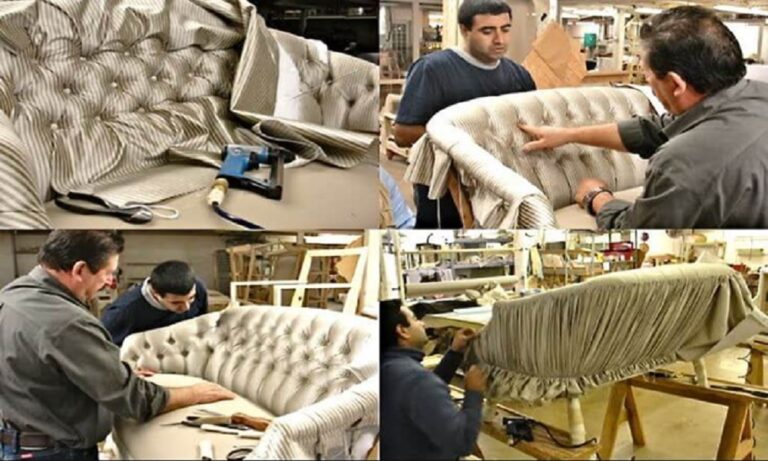There are a variety of upholstery fabrics that are used in both residential and commercial settings. These fabrics come in a range of textures, colors, and patterns, making them suitable for a variety of uses. Some common upholstery fabrics include microfiber, velvet, silk, and cotton. Each has specific properties that make it ideal for certain applications. For example, velvet is luxurious and can be used as a fabric for throws or cushions, while silk is durable and can be used for more formal projects like upholstered furniture or drapery panels.
Different types of upholstery fabric may have different pros and cons. For example, velvet tends to be expensive but has a luxurious feel. On the other hand, silk is more affordable but less durable than velvet. It’s important to choose fabric based on your specific needs and budget.
How to Choose the Right Upholstery Fabric
Upholstery fabrics come in a wide range of options, including cotton, linen, silk, and wool. Choosing the right fabric for your upholstery project can be a daunting task, but the key is to consider factors such as durability, colorfastness, texture, and weight.
Durability: Upholstery fabrics are often made from natural fibers like cotton or linen, which lend them durability and softness. However, they may also be made from synthetic fibers like polyester or nylon. Choose a fabric that is durable enough to withstand regular use and washing.
Colorfastness: Colorfastness refers to how well a fabric retains its color after being washed or exposed to sunlight (such as when used on furniture). Certain colorfast fabrics may fade over time due to wear and tear or exposure to sunlight. Consider colorfastness when choosing an upholstery fabric.
Weight: Upholstery fabrics come in a variety of weights and thicknesses, from lightweight cotton fabric to heavy-duty vinyl. Consider the weight of a fabric when determining how much it will weigh down your upholstered piece.
Tips for Cleaning and Caring for Upholstery Fabrics
Cleaning and caring for upholstery fabrics can be a bit tricky, but it’s worth the effort. If your upholstery is in good condition, it will last longer and look better. Here are a few tips to help you keep your upholstery in good shape:
- Vacuum regularly: Vacuuming helps remove loose dirt, dust, and allergens from the air. It also helps prevent mildew and other allergens from accumulating on the fabric.
- Use a dry vacuum to clean deep crevices and corners of seat cushions and back cushions. A wet vacuum can damage upholstery fabrics due to excessive moisture.
- Clean stains immediately: If you notice any spots or stains on your upholstery, use a cloth or sponge with soap or detergent to remove them as soon as possible. Never use harsh chemicals such as bleach or abrasive cleaners on fabric designed for family use.
- Store away from heat and sunlight: Avoid storing your furniture in direct sunlight or near an open flame such as a heater or radiator because this can cause damage over time. Instead, store it in a cool, dark area away from pets and children.


Comments are closed.